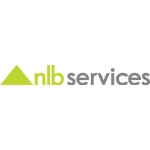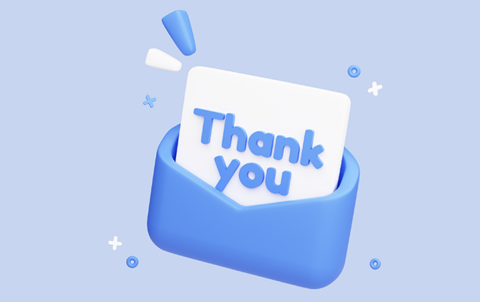© 2025 Next Level Business Services Inc. All Rights Reserved.
AI in HR: Balancing Automation with People in Talent Management
By NLB Services
Here’s something that might surprise you: the average recruiter spends about 23 hours screening resumes for a single hire. That’s almost three full workdays just sorting through applications before they even start having real conversations with candidates. No wonder AI in HR has become more than just a buzzword. It’s practically a lifeline.
But here’s where things get intriguing. While AI can blast through those resume piles in minutes, it can’t tell you if someone’s going to mesh with your company culture. It can’t read between the lines of a nervous interview answer or sense when a high performer is about to burn out.
That’s the dilemma we’re living in right now. While AI promises efficiency that would’ve seemed like science fiction a decade ago, talent management has always been deeply, fundamentally human. So the question is, how do we get the best of both worlds without losing what makes HR work in the first place?
In this blog, we will dig deep into how AI in HR is working and how to balance automation with people in talent management.
Where AI Fits in Talent Management
Talent Management has multiple aspects to ensure smooth operations, and AI can play a crucial role in enhancing efficiency at multiple fronts. Think of AI as your HR department’s incredibly fast, detail-oriented assistant who never sleeps. It excels at the repetitive, data-heavy tasks that can eat up your team’s time but don’t necessarily need human judgement.
Recruitment and Screening is where most companies start. AI-powered applicant tracking systems can scan thousands of resumes, matching keywords and qualifications against job requirements. Some even analyze video interviews for speech patterns and word choices. It’s like having a preliminary screener who works 24/7.
Then there’s employee engagement tracking. AI tools monitor pulse surveys, analyze sentiment in company communications, and flag patterns that might indicate dropping morale. Instead of waiting for your annual survey to reveal problems, you are getting real-time temperature checks.
Learning and development has gotten some serious upgrades too. Through AI, employees can get personalized training paths and employee recommendations based on their role, skill gaps, and career goals. It’s like Netflix recommendations, but for professional growth.
And, something that doesn’t get enough attention is administrative automation. The HR automation process handles things like scheduling interviews, sending follow-up emails, managing PTO requesters, and updating employee records. Though not very glamorous, it does free up HR professionals to actually talk to people instead of shuffling paperwork.
Benefits of Using AI in HR Operations
So what happens when you actually implement AI thoughtfully? The benefits of AI in HR go way beyond just “saving time”. It has the potential to bring down costs and improve efficiency.
Speed becomes your competitive advantage. When a great candidate applies to multiple jobs, the company that responds swiftly usually wins. AI can acknowledge applications in an instant, schedule interviews automatically, and move qualified candidates through the pipeline while your competitors are still sorting their inbox. It gives you the moving advantage of responding first.
Bias reduction is another big plus, though it comes with caveats we’ll get to later. A well-trained AI doesn’t care about a candidate’s name, their college, or where they live. It evaluates based on the criteria you set. That levels the playing field in ways traditional recruiting hasn’t always managed.
Gut feeling gets replaced by data-driven decisions as AI analyzes which job board brings in the best candidates, which interview questions predict success, and which employees are flight risks. With AI, you’re not guessing anymore, you’re working with actual patterns.
The HR automation best practices also reveal some surprising benefits. Companies report that HR teams spend up to 40% less time on administrative tasks. That’s not just about efficiency. It’s about redirecting human talent toward strategic work—the stuff that actually moves the needle on culture and retention.
And something that both recruiters and candidates appreciate is consistency. Every applicant gets evaluated by the same criteria. Every employee gets access to the same resources. AI doesn’t have an off day or play favorites.
Best Practices for Using AI in HR
But the truth is, implementing AI in HR isn’t just about buying software and flipping a switch. You can absolutely mess this up if you’re not careful. Here are some best practices that you can follow to while leveraging AI in HR:
Start with clear goals
Don’t implement AI just because it’s trendy. Specify what it is exactly you are trying to achieve. Are you trying to reduce time-to-hire? Improve retention? Diversify your candidate pool? Your answer determines which tools you need and how you measure success.
Keep humans in the loop
This is non-negotiable. HR is human first, machine second. And therefore,AI should recommend, not decide. A hiring manager must review AI-filtered candidates. A human should notice when the sentiment analysis flags an employee as struggling. Using AI in HR means augmenting human judgment, not replacing it.
Train your data properly
AI is only as good as the information you feed it. If your historical hiring data reflects biased decisions, your AI will learn and perpetuate those biases. Audit your data before training AI systems. Also, keep auditing regularly.
Invest in training for your HR team
Your recruiters and HR professionals must understand how the AI tools work, what they can and can’t do, and when to override them. Technology without training is just expensive confusion.
Pro Tip: Don’t automate everything at once. Pick one process, maybe resume screening or interview scheduling, and nail that before expanding. You want time to learn, adjust, and get buy-in from your team.
Balancing Human and AI Collaboration
Balancing AI and Human collaboration is the most crucial thing that organizations should take note of, this can make or break things. The question isn’t “AI or humans?” It’s “AI with humans, and who does what?”
For instance, AI handles the first leg: sorting applications, scheduling interviews, analyzing data, and flagging patterns. Then the baton is passed to humans for the second leg: conducting interviews, making final hiring decisions, having career conversations, and building relationships.
Emotional intelligence is your human superpower. AI can’t tell when a candidate is underselling themselves out of modesty. It can’t sense when an employee’s “I’m fine” actually means “I’m about to quit.” That’s where trained HR professionals step in.
Context matters more than you think. Maybe an AI flags a resume because it shows three jobs in two years. But a human sees that those were contract positions or that the candidate was caring for a sick parent. Context turns data into understanding.
The best HR teams are the ones that treat AI as a research assistant, not a decision-maker. The AI does the homework: compiles data, identifies trends, surfaces insights. Then humans make the actual calls, bringing in factors like company culture, team dynamics, and long-term strategy.
Ethical Considerations
Let’s address the elephant in the room. AI in HR comes with some serious ethical questions, and ignoring them won’t make them go away.
Bias is the big one. AI systems trained on historical data can absolutely perpetuate discrimination. If your company historically hired more men than women for leadership roles, an AI trained on that data might favor male candidates. That’s not a hypothetical; it has happened at major companies. The solution? Regular audits, diverse training data, and human oversight at every decision point.
Privacy concerns are getting harder to navigate. How much employee data should AI systems access? When does monitoring productivity cross the line into surveillance? These aren’t easy questions, but they need clear policies. Employees deserve to know what’s being tracked and how it’s being used.
Transparency isn’t optional. Candidates and employees have the right to understand how AI influences decisions about their careers. That means clear communication about when and how AI is used in the hiring process, performance reviews, and promotion decisions.
The human cost of automation deserves honest conversation too. When AI takes over administrative tasks, what happens to the people who used to do that work? Responsible companies retrain and redeploy rather than just eliminate positions.
And here’s something that doesn’t get enough attention: AI can’t understand nuance in protected categories. Things like pregnancy, disability accommodations, or religious observances require human judgment and empathy. Relying too heavily on AI in these situations isn’t just unethical, it’s legally risky.
Conclusion
So, where does this leave us? AI in HR isn’t about replacing recruiters with robots. It’s about giving HR professionals their time back so they can focus on what actually requires human judgment: understanding people, building culture, and making nuanced decisions that algorithms just can’t handle.
The companies getting this right aren’t choosing between automation and the human touch. They’re being strategic about where each one fits. AI handles the data-heavy, repetitive tasks that bog down your day. Humans handle the conversations, the context, and the complex decisions that require empathy and experience.
The benefits of AI in HR are real: faster hiring, better data, reduced bias, and more time for strategic work. But those benefits only materialize when you implement thoughtfully, keep humans in the loop, and stay vigilant about ethics and transparency.
Your HR department doesn’t need to choose between technology and humanity. You need both, working together, each doing what it does best. Want to know more best recruitment practices, check out our other blogs here.
Frequently asked questions
- Can AI make hiring decisions on its own?
No, and it shouldn’t. AI can screen, rank, and recommend candidates based on qualifications and fit, but the final hiring decision should always involve human judgment. As AI can not always understand company culture fit, it may face challenges assessing soft skills accurately, and might miss context that changes everything about a candidate’s application. Think of AI as providing a shortlist, not making the call.
- How can we ensure that AI isn’t biased in recruitment?
Start by auditing your historical hiring data before training AI systems. If past decisions were biased, your AI will learn those biases. Regularly test your AI tools with diverse candidate profiles, monitor outcomes by demographic groups, and maintain human oversight at every decision point. Also, choose vendors who are transparent about how their algorithms work and how they address bias. This isn’t a one-time fix; it requires ongoing monitoring.
- How can AI be used ethically in HR?
Ethical AI in HR starts with transparency. Keep humans in the decision-making loop, especially for high-stakes choices like hiring, firing, or promotions. Regularly audit your systems for bias and accuracy. Protect employee privacy by limiting what data AI systems can access. And most importantly, use AI to augment human judgment, not replace it.
- What is the ROI of using AI in HR?
The ROI shows up in several ways. Time-to-hire typically drops by 30-50% when AI handles initial screening. HR teams report spending up to 40% less time on administrative tasks, redirecting that effort toward strategic work. Companies also see improved retention when AI helps identify at-risk employees early. Cost per hire usually decreases, too, since you’re processing more candidates with the same team size. The exact ROI depends on your implementation and goals, but most companies see measurable returns within 6-12 months.
- What is the candidate’s response to AI in hiring?
It’s mixed, honestly. Younger candidates (Gen Z and Millennials) generally accept AI screening as long as they’re informed about it. They appreciate faster response times and streamlined processes.
However, most candidates across all age groups want to interact with real humans at some point in the process. They worry about being rejected by an algorithm that might miss their potential. The key is transparency: let candidates know AI is being used, explain how it works, and ensure they have opportunities for human interaction. When companies handle this well, candidate satisfaction actually improves because the process is faster and more efficient.
Talent Solutions








